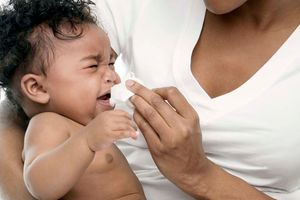Who is at risk of neural tube defects?

95 percent of all neural tube defects occur in couples who have a negative family history.
What you need to know:
- Neural tube defects occur even before a woman knows she is pregnant.
- children with spina bifida are likely to have paralysed legs and difficulties controlling their bladder and bowel movements.
- babies who are born with anencephaly will be missing major parts of their brain, skull, and scalp.
Neural tube defects occur even before a woman knows she is pregnant. This means if you do not go for prenatal appointments, your baby’s condition will not be known until during or after birth. According to the Centre for Disease Control, there are two common types of neural tube defects; spina bifida and anencephaly. Spina bifida is a defect that affects the spinal cord while anencephaly is a defect that affects the brain. According to March of Dimes, a women and children health organisation, children with spina bifida are likely to have paralysed legs and difficulties controlling their bladder and bowel movements. On the other hand, babies who are born with anencephaly will be missing major parts of their brain, skull, and scalp. In the majority of cases, they can only survive a couple of hours after birth.
Causes
According to the World Health Organization, the exact cause of neural tube defects is not known. However, over 95 percent of all neural tube defects occur in couples who have a negative family history. The WHO estimates that the risk of recurrence of a neural tube defect stands at 1 in 33 couples with one affected pregnancy, and 1 in 10 couples for those with two affected pregnancies. “Sisters of women with an affected baby have a 1 in 100 risk of getting a baby with neural tube defect while sisters of a man with an affected baby have a 1 in 300 risk of having a baby with neural tube defect,” says the WHO. The global health oversight body also singles out folic acid and zinc deficiencies as possible causes. “Other risk factors include maternal diabetes, alcohol abuse by the mother, aminopterin (an amino derivative of folic acid) indigestion, and exposure of fetus to radiation,” says the WHO. “Anticonvulsant therapy, maternal hyperthermia, antenatal exposure to rubella, and hallucinogen ingestion are also contributing risk factors.”
Prevention
According to the World Health Organization, folic acid supplementation before conception and during the first trimester of pregnancy is one of the few public health interventions that are effective in reducing the risk of neural tube defects. The WHO recommends that all women should take a folic acid supplement from the moment they begin trying to conceive until 12 weeks of gestation. Women who have had a fetus diagnosed as affected by neural tube defect or have given birth to a baby with a neural tube defect should receive information on the risk of recurrence, be advised on the protective effect of periconceptional folate supplementation, and be offered high dose supplementation,” the WHO says in its recommendations on tackling neural tube defects. These recommendations are echoed by the Centre for Disease Control which states that all women of reproductive age get 400 micrograms (mcg) of folic acid every day. This should be taken in addition to the consumption of food with folate. Women who have previously had a baby with a neural tube defect or who have diabetes, or who are taking anticonvulsant treatment are recommended to take 5mg of folic acid every day and to increase their food intake of folate. March of Dimes recommends the following foods as rich in folate:
- Beans, like lentils, pinto beans, and black beans
- Leafy green vegetables, like spinach
- liver
- Broccoli
- Peanuts
- Citrus fruits, like oranges and grapefruit
- Orange juice
You can also get folic acid from foods that are fortified with folic acid. March of Dimes recommends the following foods:
- Bread
- Breakfast cereal
- Flour
- Pasta
- White rice
Some foods you may want to avoid while you’re pregnant include:
- Unpasteurised milk and cheeses
- Raw or undercooked meat
- Certain types of fish including shark, marlin, and swordfish
Does HIV drug cause neural tube defect?
There has previously been a link between the HIV drug dolutegravir and neural tube defects. Dolutegravir is the optimal medication for patients who have been newly diagnosed with HIV. “Research supporting the 2016 WHO guidelines suggested that dolutegravir was effective and well-tolerated. However, its efficacy and safety among pregnant women and people living with both HIV and tuberculosis remained unclear,” said Dr. Steve Kanters, a medicine researcher from the University of British Columbia. This lack of clarity was further entrenched in 2018 when research indicated that there was a potentially serious risk of neural tube defects in children of women who got pregnant while taking dolutegravir. However, the drug’s previous risk of neural tube defects in children of women who got pregnant while taking it has been neutralised. “New evidence on neural tube defects show that the risk with dolutegravir is much more tolerable than previously thought,” said Dr. Kanters.




